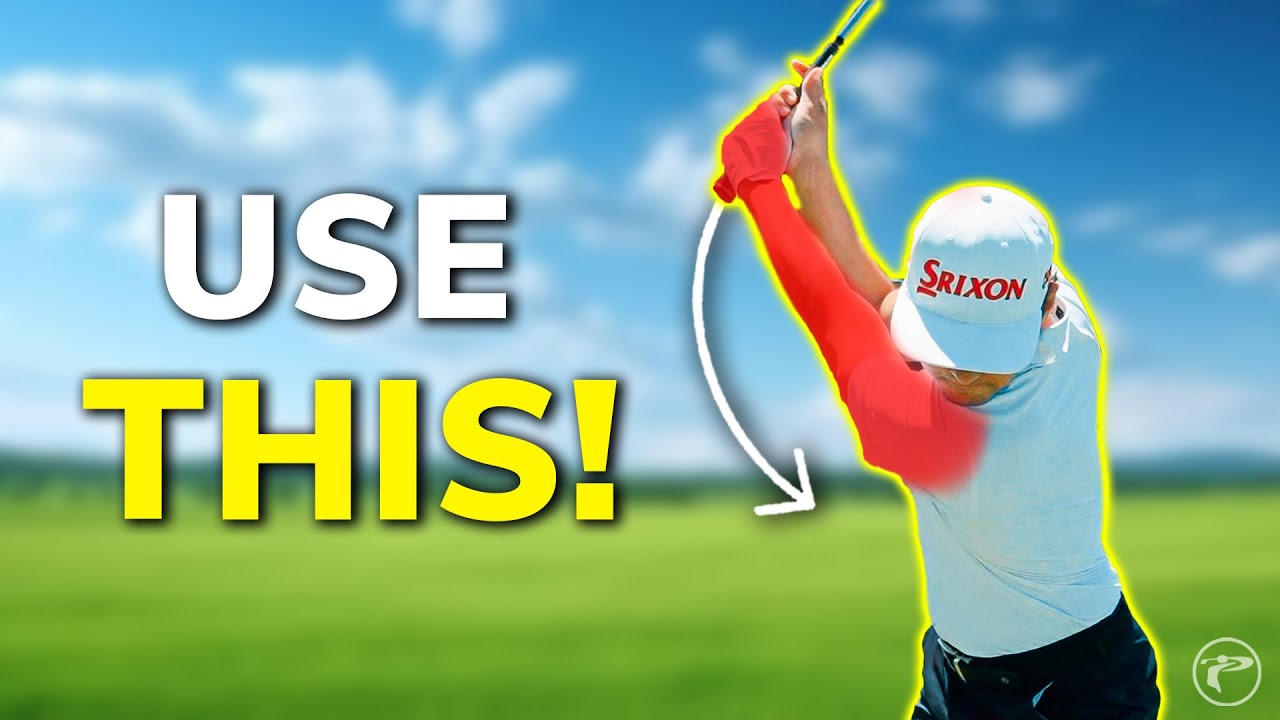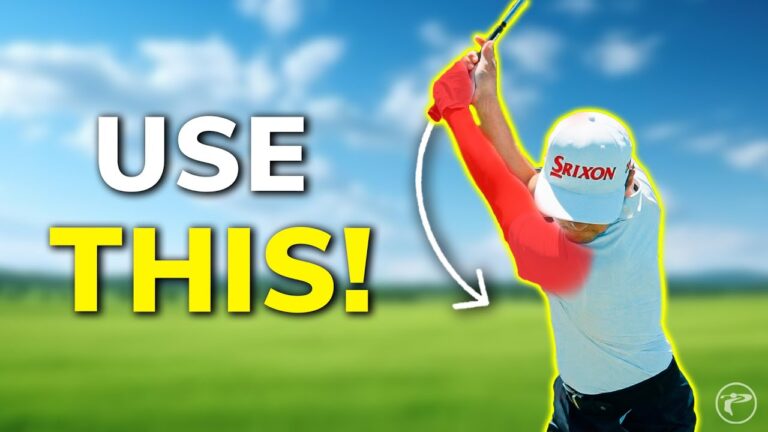
If you’re aiming to improve your golf skills by mastering ball compression for greater distance and control, you’re in the right place. Say goodbye to complex swing fixes and unlock the secret of a simple, connected movement that optimizes your performance. This guide will provide you with actionable insights to elevate your game, whether you’re a novice or a seasoned player.
Step 1: Unlock the Power of the Left Side Connection
To achieve superior ball compression, your body’s power must efficiently transfer through the clubhead at impact. The secret lies in your lead side, notably the left arm and its muscular connection to your core. Imagine a single muscle running from your left pinky, wrapping around your arm and torso, reaching your left hip pocket. This is where your power originates.
- At your backswing’s peak, focus on your left pinky pulling the club towards your left hip.
- Visualize the stretch and contraction of your left arm, lat, and oblique during the swing.
- Engage in slow or half swings to become aware of this muscle connection, leading to improved compression and contact.
Step 2: Maintain Hand and Club Alignment
A common fault causing compression issues is the right hand flipping over in the swing, causing disconnection. Instead, your hands should remain in front as you rotate through impact. Focus on pulling the handle with your left hand while your hips rotate. Practice drills emphasizing this to enhance connection and power.
Step 3: Setup Adjustments for Knock-Down Shots
Lower ball flight, particularly against the wind, requires effective knock-down shots. Instead of ball position changes, modify your setup:
- Grip down: Control the clubhead better by gripping lower on the shaft.
- Move closer: Promote a compact swing by adjusting your body an inch closer to the ball.
- Narrow stance: Enhance balance and rotation with a narrower stance.
Step 4: Use Mirror Work for Muscle Memory
Visual feedback is crucial for ingraining swing changes. Spend ten minutes a day using a mirror to practice positions and swings without external distractions. This develops correct rotation and connection, offering more effective learning than extended range time.
Step 5: Perfect Your Grip
Your grip significantly influences clubface control and wrist function. A neutral grip typically yields better compression:
- Visible knuckles: two on your lead hand.
- Lifeline of the trail hand covers the lead thumb.
- Lead thumb positioned slightly off-center on the grip.
This promotes a square clubface, crucial for consistent ball compression.
Step 6: Activate Hip Movement
Proper hip rotation opens pathways for effective club release. As your hips clear, your hands stay in front, ensuring a compressing strike on the ball. Begin your downswing by shifting your left hip towards the target, creating space for your swing.
Step 7: Practice Left-Handed Swings
Improve your left side connection through left-handed swings. This drill enhances lead side strength and reinforces the pull-through motion essential for connected swings. It also minimizes right hand ‘flipping’, bolstering consistency.
Step 8: Correct Hand Path Through Impact
Your hands should trace a path through impact that mirrors their address position. Consistency here preserves your swing plane, avoiding excessive hand movement that disrupts compression.
Step 9: Ball Flight and Swing Adjustments
Manage ball flight by using the ‘one and one and one’ setup for lower shots or adjust grip, distance, and stance for higher launches. Understanding the dynamics of your swing adjustments can significantly influence your ball control.
Step 10: Dedicate to Consistent Practice
Simplifying your swing by focusing on left-side power, hip rotation, and gripping fundamentals leads to better compression. Regular practice of these principles, with mirror work and specific drills, builds muscle memory essential for improvement.
Frequently Asked Questions (FAQ)
Why is compressing the ball important?
A: It ensures solid contact, maximizing energy transfer for greater distance and control.
How does the left side connection support compression?
A: It helps maintain hand dominance through impact, boosting power and connection.
Can grip adjustments enhance ball compression?
A: Indeed, a neutral grip supports square clubface contact and optimal wrist action.
By focusing on these fundamentals and making minor setup modifications, you’ll achieve more effective ball compression, better control your shots, and ultimately enhance your performance on the golf course.


0 Comments